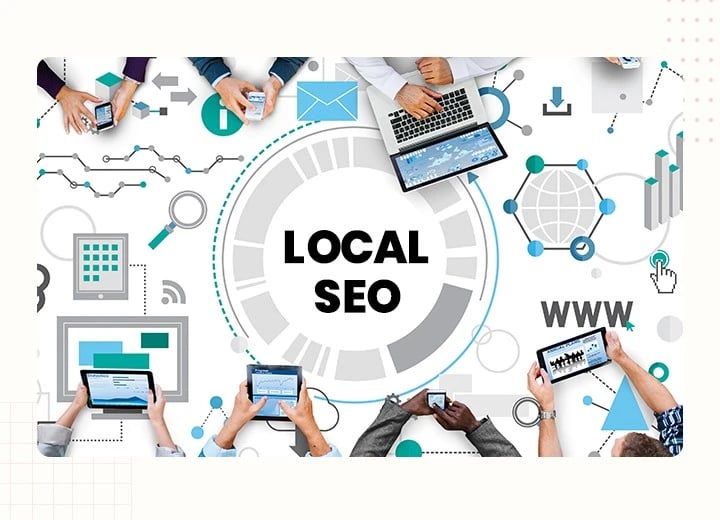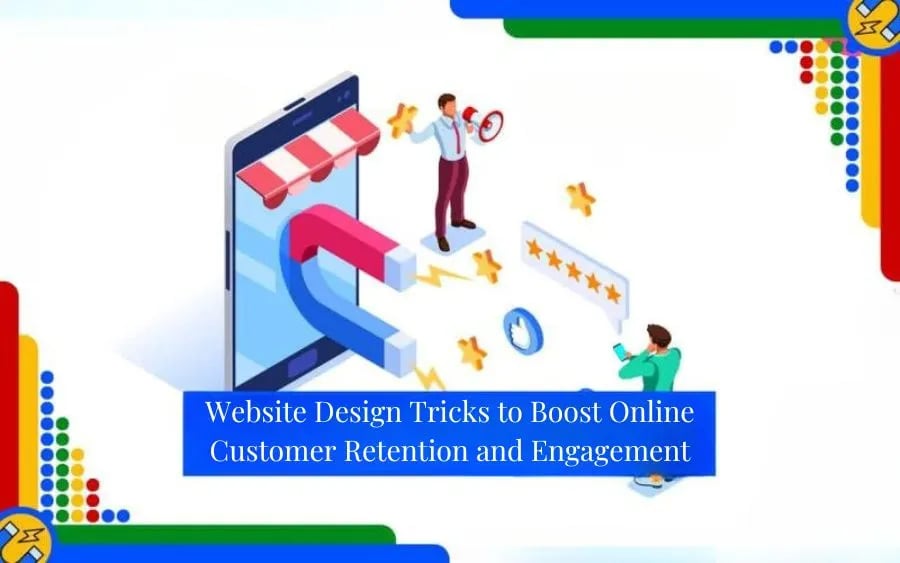
As you navigate the complex landscape of building a successful business, you’re likely no stranger to the importance of establishing trust with your customers. After all, it’s the foundation upon which loyalty is built. But have you stopped to consider the role transparency plays in fostering this trust? In today’s digital age, where information is readily available at our fingertips, customers are more discerning than ever. They crave authenticity and honesty from the brands they interact with. By embracing transparency across your website, social media, and customer interactions, you can create a loyal customer base that will drive your business forward. In this article, we’ll probe into how transparency can revolutionize your approach to building brand trust and loyalty.
The Importance of Transparency
In today’s digital age, transparency has become a crucial aspect of building trust and loyalty with your customers. As a business owner, you understand the importance of creating a strong brand reputation, and transparency plays a significant role in achieving this goal.
Defining Transparency in Business
An open and honest approach to business operations is what defines transparency. It’s about being clear and concise in your communication, ensuring that your customers, partners, and stakeholders have access to accurate and timely information. Transparency builds trust, credibility, and loyalty, ultimately leading to long-term relationships and business success.
When you prioritize transparency in your business, you demonstrate a commitment to accountability, ethics, and customer satisfaction. This, in turn, fosters a positive brand image, encouraging customers to become loyal advocates for your business.
The Rise of the Informed Consumer
Consumers today are more informed and empowered than ever before. With access to vast amounts of information online, they can research, compare, and evaluate products and services with ease. This shift in power has led to a rise in consumer expectations, with transparency being a key factor in their decision-making process.
Consumers want to know what they’re getting, how it’s made, and what values your business stands for. They expect honesty, authenticity, and openness in all interactions, from website content to customer service responses. By being transparent, you can meet these expectations, build trust, and ultimately drive conversions.
Businesses that fail to adapt to this new landscape risk losing credibility and trust with their customers. By embracing transparency, you can stay ahead of the curve, build strong relationships, and drive long-term growth.
The Benefits of Transparency
You’ve likely heard the phrase “transparency is key” thrown around in business circles, but what does it really mean for your brand? In today’s digital age, customers have more power than ever before, and they’re not afraid to use it. With a few clicks, they can research your business, read reviews, and make informed decisions about whether or not to engage with your brand. So, what’s the payoff for being transparent?
Building Trust with Customers
One of the most significant benefits of transparency is the trust it builds with your customers. When you’re open and honest about your business practices, products, and services, you demonstrate a commitment to authenticity and integrity. This, in turn, helps to establish a strong foundation of trust with your customers. They’re more likely to feel confident in their purchasing decisions, and they’ll be more willing to become loyal advocates for your brand.
By being transparent, you also show your customers that you’re willing to listen to their feedback and concerns. This helps to create a sense of mutual respect and understanding, which can lead to long-term relationships and repeat business.
Enhancing Brand Reputation
An open and transparent business is often seen as a trustworthy and credible one. When you’re willing to share information about your business practices, products, and services, you demonstrate a commitment to accountability and responsibility. This can lead to a significant enhancement of your brand reputation, as customers and prospects alike view your business as reliable and honest.
Customers are more likely to leave positive reviews and recommend your business to others when they feel like they can trust you. This, in turn, can lead to an increase in leads and sales, as well as a stronger online presence.
Encouraging Customer Loyalty
Benefits of transparency don’t stop at building trust and enhancing brand reputation. When you’re open and honest with your customers, you also encourage loyalty and retention. By keeping your customers informed about your business and its practices, you create a sense of ownership and belonging. They’re more likely to feel invested in your brand and its success, which can lead to long-term loyalty and advocacy.
To take it a step further, transparency can also help to reduce customer churn and complaints. When customers feel like they’re being kept in the loop, they’re less likely to feel surprised or misled by changes or issues within your business. This can lead to a significant reduction in customer complaints and a increase in overall satisfaction.
Types of Transparency
Now, let’s dive deeper into the different types of transparency that can help you build trust and loyalty with your customers.
| Type of Transparency | Description |
| Operational Transparency | Sharing information about your business operations, such as how you source materials or manage supply chains. |
| Financial Transparency | Disclosing financial information, such as revenue, profits, or investments, to demonstrate accountability. |
| Performance Transparency | Sharing metrics and data about your business’s performance, such as customer satisfaction ratings or sales growth. |
| Social Transparency | Being open about your business’s social and environmental impact, such as charitable donations or sustainability initiatives. |
Operational Transparency
Operating with transparency means being open about how your business functions, including your processes, policies, and practices. This can include sharing information about your supply chain, manufacturing processes, or employee treatment.
By doing so, you demonstrate accountability and a commitment to ethical practices, which can help build trust with your customers. For instance, if you’re a fashion brand, you might share information about your sustainable manufacturing practices or fair labor standards.
Financial Transparency
One of the most significant ways to build trust with your customers is by being transparent about your financial dealings.
This can include sharing information about your revenue, profits, investments, or funding sources. By doing so, you demonstrate accountability and a commitment to transparency, which can help build trust with your customers.
For instance, if you’re a startup, you might share information about your funding sources or revenue growth to demonstrate your business’s viability.
Performance Transparency
An important aspect of transparency is sharing metrics and data about your business’s performance.
This can include customer satisfaction ratings, sales growth, or other key performance indicators (KPIs). By doing so, you demonstrate accountability and a commitment to continuous improvement, which can help build trust with your customers.
A great example of performance transparency is sharing customer reviews or ratings on your website, which can help build trust with potential customers.
Barriers to Transparency
Keep in mind that achieving transparency is not without its challenges. There are several barriers that can hinder your efforts to build trust and loyalty with your customers. Let’s explore some of the common obstacles that may stand in your way.
Fear of Vulnerability
To be transparent, you need to be willing to be vulnerable. This can be a daunting task, especially if you’re not used to sharing information about your business. You may fear that by being open, you’ll be exposing your weaknesses to your competitors or customers. However, this fear can hold you back from building meaningful relationships with your audience.
Think about it: when you’re transparent, you’re showing your customers that you’re human, just like them. You’re acknowledging that you’re not perfect, and that you’re willing to learn and improve. This vulnerability can actually help you build stronger bonds with your customers, as they’ll appreciate your honesty and authenticity.
Lack of Resources
An often-cited reason for lack of transparency is the absence of resources. You may not have the time, money, or personnel to devote to creating and sharing transparent content. This can be a valid concern, especially for small businesses or startups.
However, lack of resources doesn’t have to be a barrier to transparency. You can start small, by sharing simple updates on your website or social media channels. You can also repurpose existing content, such as customer testimonials or behind-the-scenes stories, to create engaging and transparent content.
Plus, investing in transparency can actually save you resources in the long run. When you’re open and honest with your customers, you’re less likely to face costly PR crises or reputation damage. By being proactive and transparent, you can build trust and loyalty with your customers, which can lead to increased revenue and growth.
Complexity of Information
Another common barrier to transparency is the complexity of information. You may have a lot of data and insights that you want to share with your customers, but you’re not sure how to present it in a clear and concise manner.
This is a valid concern, especially if you’re dealing with technical or complex information. However, there are ways to simplify complex data and make it accessible to your customers. You can use visual aids, such as infographics or videos, to break down complex information into easy-to-understand chunks.
Another approach is to focus on the “why” behind the data. Instead of just presenting numbers and statistics, try to explain what they mean and how they impact your customers. This can help create a sense of context and understanding, which can lead to increased trust and loyalty.
Strategies for Achieving Transparency

Not every business is naturally transparent, but with the right strategies, you can cultivate a culture of openness and honesty that resonates with your customers.
Implementing Open Communication Channels
One of the most effective ways to achieve transparency is by implementing open communication channels that allow customers to easily reach out to you. This can be done by providing multiple contact methods on your website, such as phone numbers, email addresses, and live chat options. By making it easy for customers to get in touch with you, you’re showing them that you value their feedback and concerns.
When customers feel heard, they’re more likely to trust your business and become loyal advocates. Make sure to respond promptly to customer inquiries and provide clear, concise answers to their questions. This will help build trust and demonstrate your commitment to transparency.
Providing Regular Updates
For businesses, providing regular updates is crucial in maintaining transparency. This can be done through social media, email newsletters, or blog posts that keep customers informed about new products, services, or company news. By sharing behind-the-scenes insights and sneak peeks, you’re giving customers a sense of ownership and involvement in your business.
With regular updates, you’re also demonstrating your commitment to keeping customers informed and engaged. This can help build trust and loyalty, as customers feel valued and appreciated.
Moreover, providing regular updates shows that you’re proactive and willing to communicate openly with your customers. This can help mitigate any potential issues or concerns that may arise, as customers feel informed and empowered to make decisions.
Embracing Accountability
Transparency is not just about sharing information; it’s also about being accountable for your actions. When mistakes happen, own up to them and apologize sincerely. Explain what went wrong and how you’re taking steps to prevent it from happening again.
By embracing accountability, you’re showing customers that you’re committed to doing the right thing, even when it’s difficult. This can help build trust and credibility, as customers see that you’re willing to take responsibility for your actions.
The key to embracing accountability is to be proactive and transparent in your communication. Don’t try to sweep mistakes under the rug or blame others; instead, own up to them and provide a clear plan of action to rectify the situation. This will help build trust and demonstrate your commitment to transparency.
Transparency in Action

To truly understand the power of transparency in building brand trust and loyalty, transparency is no longer a nice-to-have, but a must-have for businesses that want to thrive.
Successful Brands that Embody Transparency
That being said, there are brands that have successfully embodied transparency in their business practices, and it’s worth taking a closer look at what they’re doing right. Take Patagonia, for example, which has been a pioneer in sustainable and environmentally-friendly practices. The outdoor apparel brand has been transparent about its supply chain, manufacturing processes, and environmental impact, earning the trust and loyalty of its customers.
Another great example is Buffer, a social media management platform that has been transparent about its company culture, salaries, and even its revenue. By being open and honest about its business practices, Buffer has built a loyal community of customers who appreciate its commitment to transparency.
Industry-Specific Transparency Challenges
Transparency can be particularly challenging in certain industries, where regulations, complexity, or competitive pressures may make it difficult to be open and honest with customers. For instance, in the financial services industry, companies may be hesitant to disclose certain information due to regulatory constraints or fear of competitors gaining an advantage.
A good example of this is the healthcare industry, where patient privacy and confidentiality are of utmost importance. Healthcare providers must balance the need for transparency with the need to protect sensitive patient information, making it a complex and delicate issue to navigate.
A closer look at industry-specific transparency challenges reveals that it’s not just about disclosing information, but also about creating a culture of openness and accountability within the organization. By doing so, businesses can build trust with their customers and establish a strong foundation for long-term loyalty.
Summing up
Following this exploration of transparency as the key to building brand trust and loyalty, you now have a deeper understanding of the importance of openness and honesty in your business. By being transparent, you can create a strong foundation for your brand, fostering trust and loyalty among your customers. This, in turn, can lead to increased conversions, positive reviews, and a strong online reputation. As you design your brand, remember that transparency is not just a buzzword, but a crucial element in building long-term relationships with your customers.
To take your brand to the next level, consider implementing transparency in all aspects of your business, from your website design to your social media presence. By doing so, you’ll be able to attract more leads, convert them into paying customers, and retain them through timely reminders and personalized interactions. By prioritizing transparency, you’ll be well on your way to establishing a loyal customer base that will drive the growth and success of your business.










